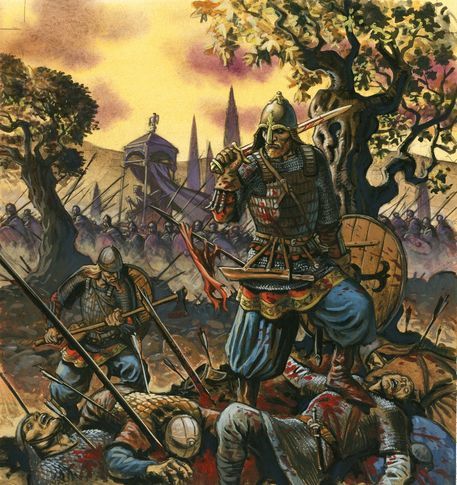Yup, the Roman realm that began as an Italic town which conquered most of the known world lasted all the way up until 1453, against repeatedly terrible odds. They were always Romans to themselves, and Romans to their eastern neighbours. Persian, Arabic and Turkish words for Byzantium were all variations of Rum, with the European Greek lands under Ottoman conrol being called Rumeli and the Greek Orthodox Christian population being the Rum millet, headed by the Patriarch of Constantinople, answerable to the Sultan. The eastern Roman identity lasted all the way up to the early 20th century, when people living on some Greek isles were asked by Greek mainlander troops who they were. "Romans," they answered, but they were told instead that they were Hellenes.
The history of Byzantium gives a whole new ring to the term Graeco-Roman, doesn't it? The ancient mediterranean civilization surviving hordes upon hordes of enemies, ravages and depopulation, clawing itself back into shape and reconquest time and time again, only to have their efforts smashed: The boulder of Sisyphus rolls down the slope again as plague, raids, military disasters and new invasions hit home.

They got lucky sometimes, and could trust in the Theodosian walls of Constantinople and in Greek fire to keep the nerve center of the empire intact up to the fourth crusade. Sometimes the power of gold was enough to stave off threats, or to draw mercenaries from far and wide to their service. Their many scattered coastal holdings could be resupplied and reinforced by the Roman navy, and for a long time they could fend off superior foes in the east by upholding a frontier at the Taurus mountains. Byzantine history is full of clever strategy and it has got its share of diplomatic brilliance ("my enemy's enemy is my friend") and military success, but ultimately the medieval Romans couldn't afford to wage war on more fronts than two: One front where they could have an offensive going, and another front where a decent defense could be mounted. They would often find themselves attacked on at least three or four fronts simultaneously.

Check out Nicephorus I, the Roman emperor who was made into a Bulgar drinking cup after the disastrous battle of Pliska in 811.

Say what one like about the whimpering last centuries of Byzantium, but the last ruler of the Roman empire went out with a bang worthy of the Roman name.